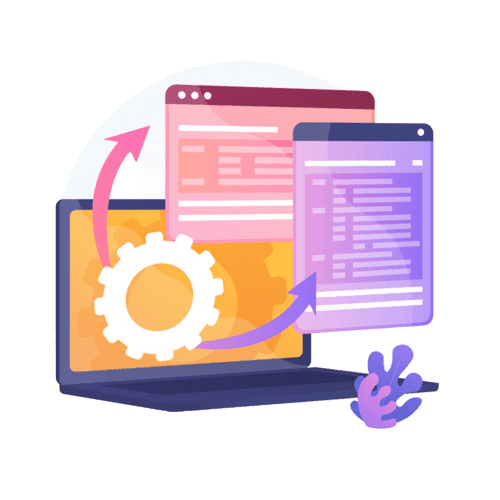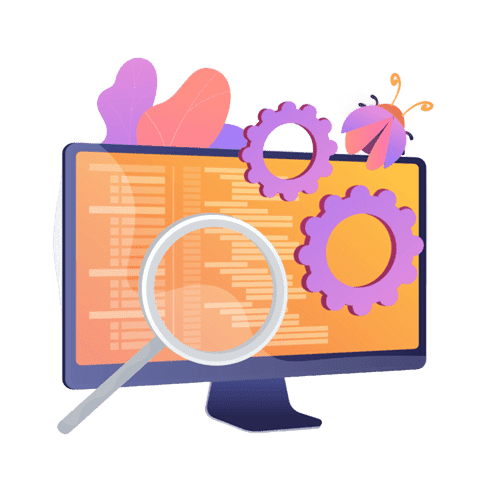Our mastermind meetings are designed to provide a supportive and empowering space for female entrepreneurs to connect, collaborate, and overcome challenges together. As facilitators, we believe in fostering a culture of confidence, accountability, and growth.
CMMI Level 2 SAM Process Area: A Comprehensive Overview
Discover the critical role of Supplier Agreement Management (SAM) in CMMI Level 2 for effective software acquisition and quality assurance. Learn how integrating non-technical features catalogues can streamline supplier evaluation, minimize risks, and optimize project outcomes.

In today’s rapidly evolving software development landscape, quality assurance and process improvement are more critical than ever. Organizations are increasingly adopting frameworks like Capability Maturity Model Integration (CMMI) to enhance their software processes, ensure better quality, and manage risks effectively. Among the various process areas (PAs) defined in CMMI Level 2, Supplier Agreement Management (SAM) plays a pivotal role in overseeing relationships with suppliers, especially when dealing with Commercial-Off-The-Shelf (COTS) products or outsourced software components.
This post delves into the SAM process area within CMMI Level 2, emphasizing its significance, challenges, and best practices. We will explore the integration of non-technical features catalogues to streamline supplier management, as discussed in the study by Carvallo et al., and analyze a real-world case study involving ETAPATELECOM, a telecommunications company in Ecuador.
Understanding CMMI Level 2 and Supplier Agreement Management
CMMI Overview
CMMI (Capability Maturity Model Integration) is a process-level improvement training and appraisal program administered by the CMMI Institute. CMMI is structured into five maturity levels, each of which groups a set of predefined process areas that are critical for software engineering and development practices. These levels range from Level 1 (Initial) to Level 5 (Optimizing), indicating the organization’s maturity in handling software projects effectively.
CMMI Level 2, known as the „Managed” level, focuses on establishing basic project management practices. Organizations at this level are characterized by their ability to repeat successful processes across similar projects, ensuring that successful practices are retained even in stressful situations.
Supplier Agreement Management (SAM) in CMMI Level 2
SAM is a key process area in CMMI Level 2, specifically designed to manage the acquisition of products and services from suppliers. This area addresses the complete lifecycle of supplier management, from selecting suppliers, establishing agreements, to overseeing the execution and ensuring compliance with the terms of the agreement. The primary goals of SAM include:
Establishing Supplier Agreements: Ensuring that all supplier-related agreements are well-documented, comprehensive, and in alignment with the organization’s requirements and project objectives.
Satisfying Supplier Agreements: Monitoring and managing supplier performance to ensure that all contractual obligations are met, and the acquired products or services meet the expected quality and functionality.
The SAM process area is crucial when dealing with COTS products or outsourced software components, as it mitigates risks associated with supplier reliability, product quality, and compliance.

Increased Adoption
As of 2022, over 10,000 organizations worldwide have adopted CMMI models, highlighting its role as a leading framework for process improvement and capability development across various industries.
%
Quality Improvement
Organizations that implement CMMI Level 2 processes, including SAM, report a 30% reduction in defects and rework costs, demonstrating the effectiveness of standardized supplier management and
Non-Technical Features in SAM: Enhancing Supplier Management
The Role of Non-Technical Features
While the technical quality of software products is often emphasized, non-technical features play a significant role in the success of supplier management. Non-technical features include aspects such as cost, licensing, support services, supplier reputation, and risk management, which are not directly related to the software’s intrinsic quality but significantly impact the overall project outcome.
The study by Carvallo et al. highlights the importance of integrating non-technical features catalogues to support CMMI Level 2 SAM practices. These catalogues provide a structured approach to defining, categorizing, and evaluating non-technical aspects, ensuring a comprehensive analysis during supplier selection and management.


Developing Non-Technical Features Catalogues
Carvallo et al. proposed a method for constructing a non-technical features catalogue tailored to CMMI Level 2 SAM requirements. The development process involves the following steps:
Defining Characteristics and Subcharacteristics: The catalogue starts by identifying high-level non-technical characteristics (e.g., supplier reputation, cost management) and breaks them down into more specific subcharacteristics.
Customizing the Catalogue: Organizations can customize the catalogue based on their specific needs, project context, and industry standards. This customization ensures relevance and applicability to the particular software acquisition scenario.
Using Metrics for Evaluation: Each non-technical feature is associated with specific metrics that facilitate quantitative evaluation. These metrics provide a uniform way of comparing different suppliers and products, aiding decision-making.
Case Study: Implementing SAM in ETAPATELECOM
Background of ETAPATELECOM
ETAPATELECOM is a telecommunications company based in Cuenca, Ecuador, providing internet access, data carrying, and fixed telephone services. To support its growth and operational needs, ETAPATELECOM initiated a project to select and adopt several COTS components required for its operations, including mediation, billing, ERP, CRM, BSC, and Call Center management components.
Application of Non-Technical Features in SAM
The implementation of SAM in ETAPATELECOM involved using a non-technical features catalogue to streamline the supplier selection and agreement processes. Key steps included:
- Determining Acquisition Type: The organization evaluated the feasibility of acquiring components from external suppliers versus in-house development. Non-technical features such as cost, support availability, and supplier reputation played a critical role in this decision-making process.
- Selecting Suppliers: ETAPATELECOM issued Request for Information (RFI) forms structured around the non-technical features catalogue. Suppliers were evaluated based on their responses, focusing on non-technical aspects like organizational structure, licensing options, and service guarantees.
- Establishing Supplier Agreements: Detailed agreements were established, incorporating non-technical attributes to ensure clarity and minimize risks. These agreements covered aspects such as budget, timelines, support services, and warranties.
- Monitoring and Executing Agreements: The non-technical features catalogue provided a framework for ongoing monitoring of supplier performance, ensuring adherence to contractual terms and facilitating early detection of potential issues.
- Acceptance and Transition: The final work products were assessed not only for technical compliance but also for adherence to non-technical commitments. This approach ensured a smooth transition of products into operational use, with clear guidelines for future support and maintenance.
Best Practices for Effective SAM Implementation
Based on the insights from the ETAPATELECOM case study and broader industry experience, the following best practices can enhance SAM implementation in CMMI Level 2 organizations:
- Develop Comprehensive Non-Technical Features Catalogues: Organizations should invest in developing detailed catalogues that cover all relevant non-technical aspects. These catalogues should be tailored to the specific industry and project requirements.
- Integrate Non-Technical Evaluation into Supplier Selection: Non-technical features should be a key component of the supplier evaluation process, alongside technical quality. This integration ensures a holistic view of supplier capabilities and potential risks.
- Use Structured RFIs for Information Gathering: Issuing structured RFIs based on the non-technical features catalogue helps standardize supplier responses, making comparison and evaluation more straightforward.
- Monitor Supplier Performance Against Non-Technical Commitments: Regular monitoring and assessment of supplier performance against non-technical criteria help maintain project alignment and address issues proactively.
- Engage in Continuous Improvement: Organizations should periodically review and update their non-technical features catalogues and SAM practices based on feedback and evolving industry standards.
Conclusion
The Supplier Agreement Management process area is integral to achieving CMMI Level 2 maturity, particularly for organizations relying on COTS products and outsourced software components. By incorporating non-technical features catalogues, organizations can enhance their SAM practices, ensuring comprehensive evaluation, effective supplier management, and successful project outcomes. The case of ETAPATELECOM illustrates the practical application of these principles, demonstrating how a structured approach to non-technical features can lead to better decision-making, reduced risks, and improved supplier relationships. As organizations continue to navigate the complexities of software acquisition, the adoption of such best practices will be essential for sustained growth and success.
References
- Carvallo, J. P., Franch, X., & Quer, C. (2008). Supporting CMMI Level 2 SAM PA with Non-technical Features Catalogues. Software Process Improvement and Practice, 13(2), 171-182.
- Chrissis, M. B., Konrad, M., & Shrum, S. (2003). CMMI: Guidelines for Process Integration and Product Improvement. Addison-Wesley.
- International Organization for Standardization (ISO). (2001). ISO/IEC 9126-1: Software Engineering – Product Quality, Part 1.
- Royce, W. (2002). CMM vs. CMMI: From Conventional to Modern Software Management. The Rational Edge.
Wanna know more? Let's dive in!
A Comprehensive Exploration of Agile Auditing
Agile auditing transforms traditional audit processes by incorporating flexibility, collaboration, and continuous feedback. By working in short, iterative cycles called Sprints, audit teams can quickly adapt to changing risks, deliver timely insights, and align more closely with organizational priorities, enhancing both audit efficiency and value.
The Breakdown on Agile Auditing & Scrum
Agile Auditing blends speed and flexibility into traditional auditing, making the process more efficient and responsive. By breaking projects into small, manageable tasks, using roles like Scrum Master and Product Owner, and focusing on constant feedback, Agile ensures better communication, faster results, and continuous improvement in auditing practices.
Our Mentoring Success Stories
Level Up Your QA Game: Mentoring Circles Empowering Quality Assurance ProfessionalsDiscover the Power of Collaboration, Knowledge Sharing, and Career GrowthOur mentoring program aims to foster a supportive and collaborative environment where QA professionals can learn...
Sustainability in Supply Chain Management
Sustainable supply chain management integrates environmental and social considerations into operations, reducing negative impacts while enhancing business performance. It involves tools like supplier codes, audits, and collaboration, with companies such as Unilever, Coca-Cola, and IKEA leading by example. This approach is vital for mitigating risks and achieving long-term profitability.
Product Safety and Security in the Global Supply Chain
Product safety and security in global supply chains face significant challenges due to their complexity, including risks of contamination, counterfeiting, and regulatory disparities. Industries such as food, pharmaceuticals, and medical devices are particularly vulnerable. Addressing these issues presents opportunities for research in regulation, traceability systems, and supplier management strategies.
Supplier Audits: Ensuring Quality and Compliance in the Supply Chain
Supplier audits are essential for ensuring quality, managing risks, and maintaining compliance in the supply chain. By conducting systematic evaluations of suppliers’ processes, products, and compliance with standards, organizations can mitigate potential disruptions, ensure product quality, and build stronger, collaborative relationships for long-term success.
Innovation Compass, a self-audit tool designed to enhance the new product development
The Innovation Compass is a self-audit tool designed to enhance new product development by assessing five key themes: structure, leadership, outputs, teams, and context. By identifying gaps between current and desired performance, it offers a flexible, context-driven framework for improving innovation capabilities in diverse organizational environments.
Product Audit Standards and Regulations: An In-depth Analysis
Product audits ensure product quality, consistency, and regulatory compliance across industries. Key standards influencing product audits include ISO 9001, IATF 16949, VDA 6.5, FDA regulations, and CE marking requirements. These frameworks establish guidelines for verifying product conformity, managing non-conformities, and maintaining high-quality standards in sectors like automotive, medical devices, pharmaceuticals, and more.
9 Types of Product Audit
We explore various types of product audits, including functional, quality, safety, regulatory compliance, customer satisfaction, environmental impact, ethical sourcing, product recall, and end-of-life audits. Each audit type assesses different aspects of a product’s lifecycle, ensuring performance, compliance, and sustainability while aligning with customer expectations and legal standards.
The Future of Process Audits: Trends and Developments
Process audits are evolving with trends like automation, AI, blockchain, and data analytics, enhancing accuracy and efficiency. Future audits will focus on continuous monitoring, risk-based approaches, and real-time insights. However, challenges in cybersecurity, data privacy, and auditor skill development will also shape the future of the field.
Common Findings in Process Audits: How to Address Them
Process audits commonly reveal issues such as inadequate documentation, inconsistent procedures, resource inefficiency, and poor communication. Addressing these findings requires robust corrective actions, risk management, and continuous improvement efforts. Implementing effective corrective and preventive actions (CAPA) ensures compliance, reduces recurring issues, and enhances overall process performance.












